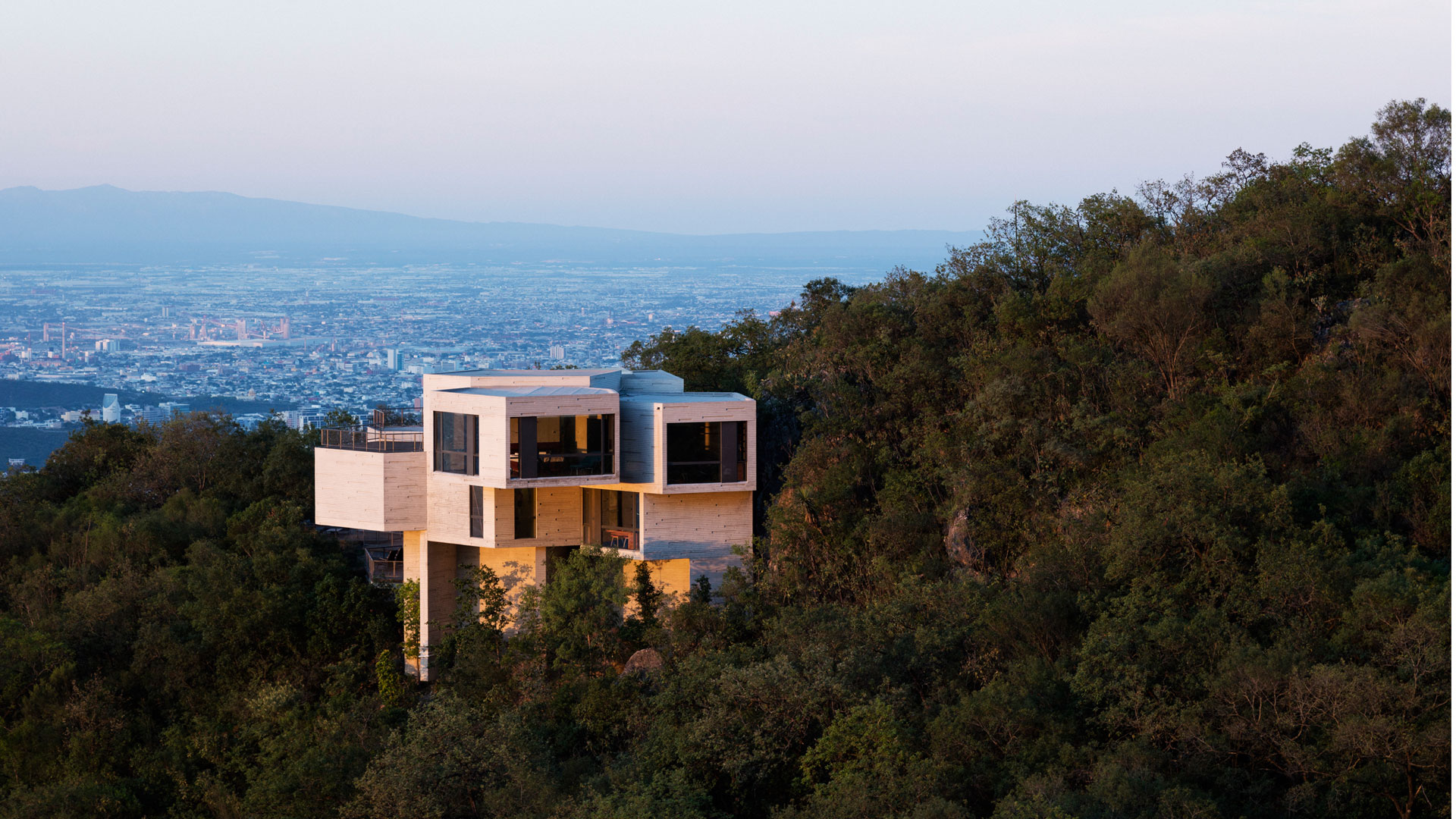Portrait of Tatiana Bilbao
The researcher

She belongs to a very talented generation of Mexican architects. And is part of a widespread family of architects. Tatiana Bilbao from Mexico City held the “Architecture Speech” at the invitation of FSB to the literature and music festival in East Westphalia-Lippe. On Friday, July 21, 2017, she presented her work in the Marta Herford Museum.
Actually, Tatiana Bilbao didn't want to become an architect at all. The profession was simply too present in her family: an aunt and an uncle were architects, as were just under a dozen of their cousins. Bilbao's grandfather, Tomás Bilbao, was also an architect and worked as minister of construction in the Second Spanish Republic. The Franco putsch forced him into exile with his family, and they went to Mexico City, which at that time developed as the new home of many Spanish-speaking emigrants into a left-wing liberal center for art and science.
Tatiana Bilbao, born in 1972 in Mexico City, wanted to escape this familiar character, but her industrial design studies in Milan were only a very short detour before she did study architecture at the Universidad Iberoamericana in the Mexican capital.
She graduated in 1996 just in time for the end of a long economic crisis in Mexico that had forced almost all private architecture firms in the country to give up. “Back then, architecture was a luxury that nobody wanted to afford,” recalls Bilbao. She only felt this phase through her family. Bilbao worked for almost two years in the municipal office for housing and urban development of Mexico City, and also organized lecture series and conferences with international architects such as Álvaro Siza, Rem Koolhaas and Tadao Ando at her former university. Then she founded the joint office LCM, the Laboratorio de la Ciudad de Mexico, with Fernando Romero, born in 1971, in 1999, with which they mainly created study assignments.
When the number of orders increased steadily, the two partners parted ways on good terms in order to set up their own offices, which are now among the most internationally known in Mexico. Together with Derek Dellekamp, Frida Escobedo and Michel Rojkind, Romero and Bilbao are part of an extremely remarkable generation of architects who, given such spectacular buildings as the Museo Soumaya (Romero), the Cineteca Nacional (Rohkind) or the La Tallera Siqueiros (Escobedo), definitely can be described as Mexico's most talented generation of architects of all time.
If each member of this Mexican generation were assigned certain roles, as in a television series, then Tatiana Bilbao might be the down-to-earth brooder whose thoughtful opinion is valued by everyone. The tendency towards grand gestures, which occurs again and again with the others, is almost completely absent in their architecture. Only the two very first projects of her own office, an exhibition pavilion in China and the first phase of construction in the Botanical Garden of Culiacán (both in 2007), still showed themselves with rather jagged, fragmented forms, whose slightly deconstructivist appearance brought Bilbao directly to Zaha Hadid's comparison .
What distinguishes Bilbao from Hadid in particular is that they do not produce any signature buildings, i.e. no buildings with a clearly recognizable signature that primarily focuses on the architect and his constant “attitude”. Instead, Bilbao researches anew at every location and with every order for a suitable approach and design strategy. Her portfolio is full of surprises: There is the "Haus Ajijic" (2011) with its soft, reddish shimmering rammed earth walls right next to the "Haus Ventura" (also 2011) with its nested, often angled individual rooms, inside and out in tough exposed concrete -Aesthetics crash into each other. This is followed by a university building in Cancún (2013),
Is she afraid of repeating herself all too quickly as an architect and playing the same routine over and over again? No, says Bilbao, they never intended to build their buildings as differently as possible. Instead, it demands from its architecture to research every location and its building traditions as precisely as possible: What is being produced nearby, who will build the house, how are buildings traditionally built here? This field research then gives rise to a variety of shapes, materials and types of construction. The rammed earth at the Ajijic house not only helped to keep the budget low, it was also a common material in the region - the construction workers knew how to make such a structure. Cancun, on the other hand, where the imposing research building made of glass and steel was erected, is an “industrial city full of steelworks”, as Bilbao says. Every time she works with the people, materials and construction methods that she finds in the places.
So it is hardly surprising that Tatiana Bilbao recently turned to social housing in Mexico - where she was previously known primarily for relatively luxurious private houses. In autumn 2015, she presented the prototype for her new project, the “8,000 dollar house”, at the first Chicago Architecture Biennale. With its modular structure and different materials, it should be as flexible as possible and thus be able to be built throughout the country. She completed a first group of 15 houses based on this model in Acuña in 2016 and was already able to prove how the fundamental considerations for a decidedly simple and inexpensive house, which was explicitly designed for the poorest parts of the population in Mexico, relate to the specific physical, climatic conditions , have the political and topographical conditions of a real place adapted. Because for someone like Tatiana Bilbao, who actually researches every location in detail before building, such an idea should be an impossibility: to develop a basic type for a house that can be reproduced everywhere. The fact that she sets herself such a task shows that she is still a long way from continuously exploring the new.













